A favorite condiment for Indian meals, Fresh Turmeric Pickle has an earthy-peppery flavor of turmeric roots and a tangy mouthwatering flavor from the lemons. The flavors get further elevated with spices and just the right amount of heat from fresh green chilies. With all the incredible flavors and health benefits this homemade pickle is easy to make and keeps for days. Traditionally served with hot parathas, curries, and rice, Haldi Ka Achar is also terrific in sandwiches and wraps.
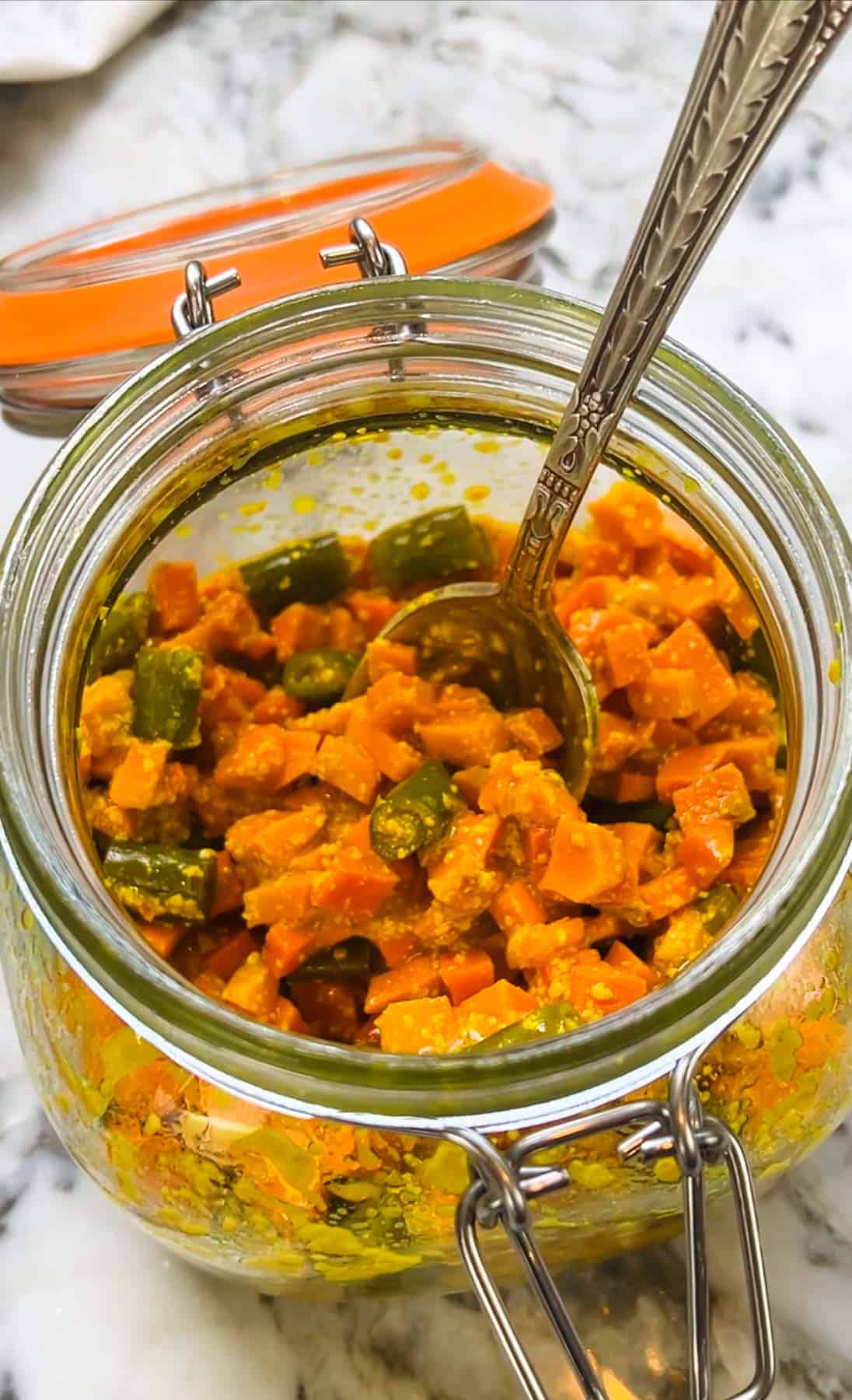
Want to Save This Recipe?
Enter your email & I'll send it to your inbox. Plus, get great new recipes from me every week!
By submitting this form, you consent to receive emails from Minstry of Curry
When my parents visited in the Summer of 2022, I was super excited to cook and learn a few traditional recipes from my mom. She makes amazing pickles, and so learning how to make mango pickle and fresh turmeric pickle, AKA Haldi Achar, was on top of my list. Although the recipe is quite simple, the stories, techniques, and minute details on how and why things are done while pickling were enlightening.
If you’ve ever spotted knobby, golden-orange roots that resemble ginger at your local Indian or health food store, chances are you’ve seen raw turmeric, also known as Kachi Haldi. It has thin, light brown skin and vibrant orange flesh inside. Compared to ground turmeric powder, raw turmeric offers a brighter, more earthy, and citrusy flavor. It’s known for its wellness benefits and adds depth to soups, curries, teas, and especially homemade pickles.
You might also come across Amba Haldi (also called Aamba Haldi or Amba Haldar), which looks similar on the outside but has a pale, almost white interior. This variety is often referred to as mango ginger or white turmeric due to its mild, fruity notes.
In this recipe, I’ve used the yellow turmeric, but many traditional pickles like Haldi Achaar are made by combining both varieties for a delicious balance of flavor and aroma.
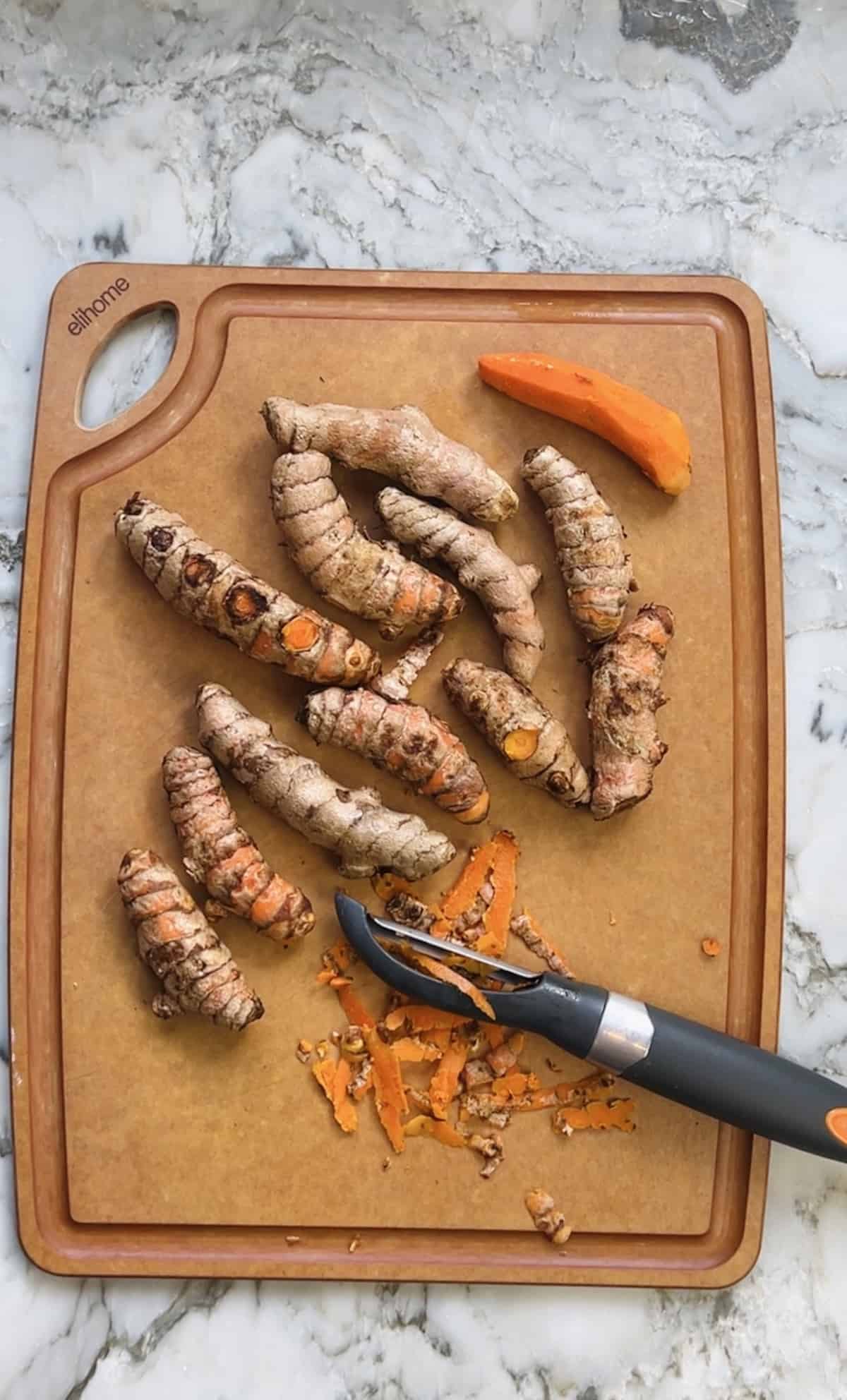
Achar (or Achaar) is the Indian word for pickles—bold, flavorful condiments that bring a tangy, salty, spicy, or sometimes sweet kick to any meal. Made from a variety of fruits (especially tart ones) and vegetables, these pickles are a staple in South Asian cuisine.
Most are spicy and tangy, seasoned with spices like mustard seeds and red chili powder, and preserved with salt and oil. Just a small spoonful can transform a simple meal with a burst of intense, crave-worthy flavor.
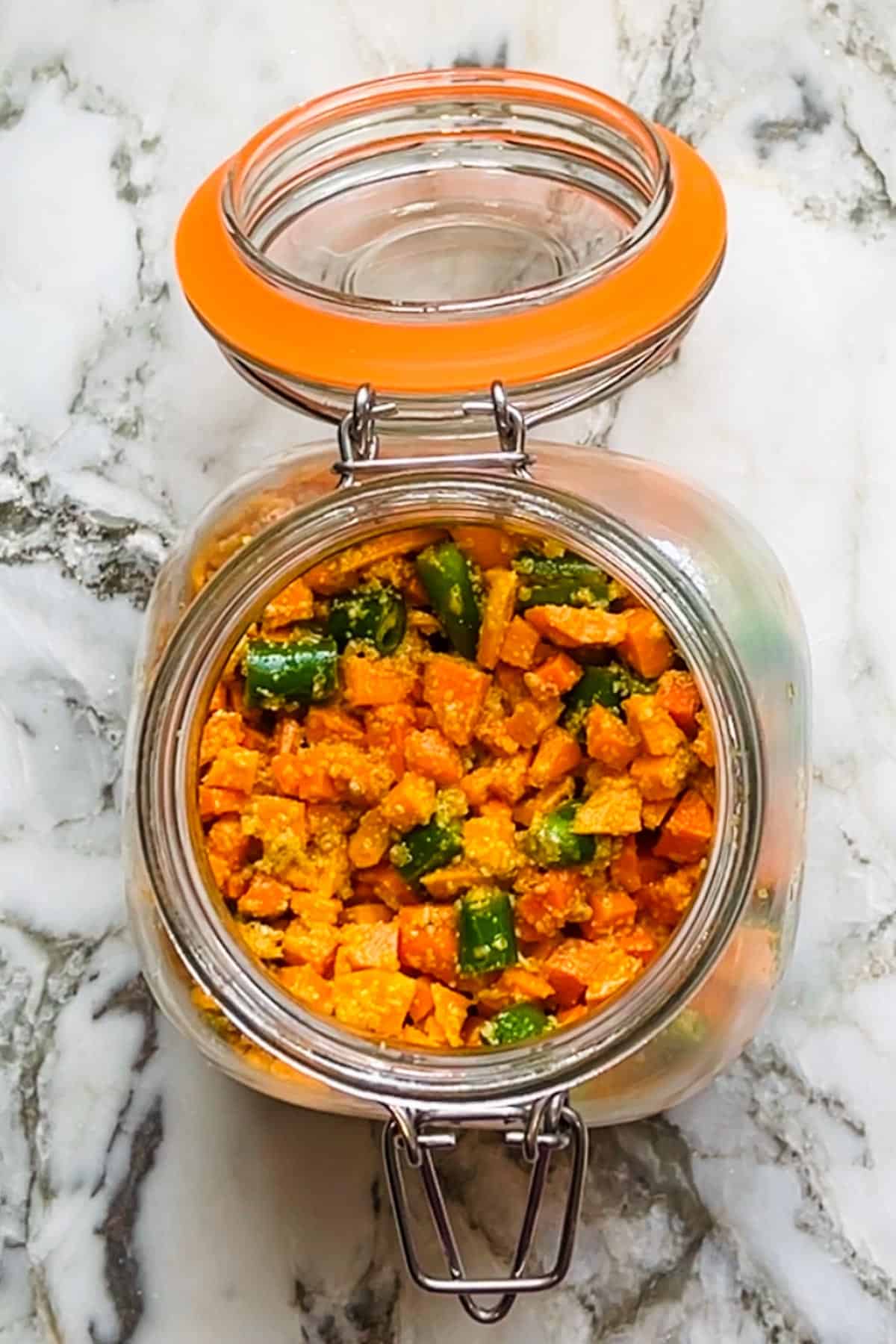
Ingredients
- Fresh Turmeric Roots - are readily available in most US Indian grocery stores and look similar to organic ginger root.
- Green Chillies - long green chilies sold in Indian grocery stores are mildly spicy. They add a perfect heat level and crunchy texture. Make sure to buy fresh green chilies that are firm and have green stems. The white seeds inside are also a good sign of freshness, as they get stale the seeds become brownish.
- Split Mustard Seeds - a key ingredient in Indian pickles, these yellow split mustard seeds are known as "Rai Kuria(Dal)" in Hindi or "Moharichi Dal" in Marathi.
- Fenugreek Seeds - used in small quantities for a hint of bitter-sweet flavors.
- Lemon - fresh lemon juice adds tangy flavors and also helps preserve the pickle.
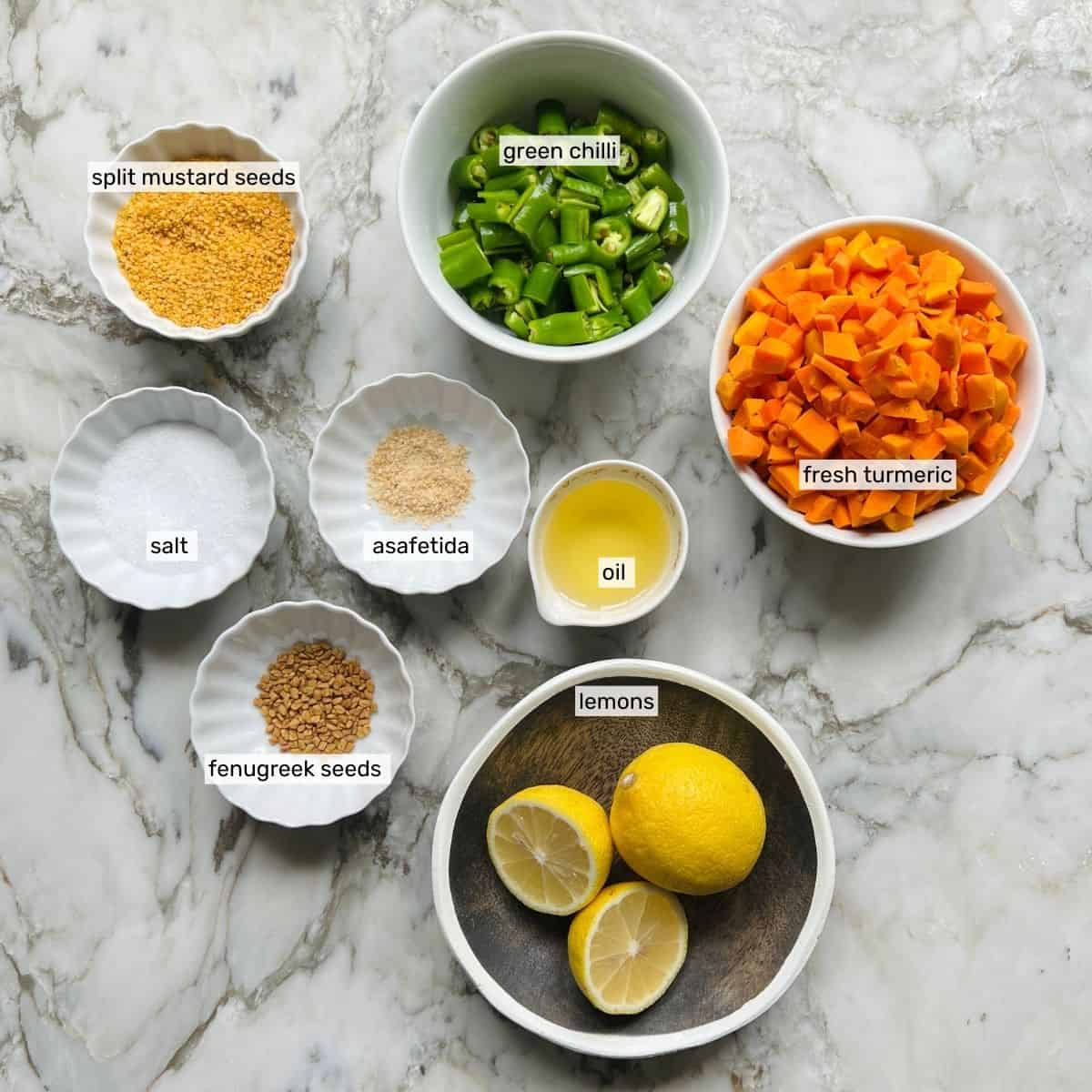
How to Make Fresh Turmeric Pickle
- Rinse and completely dry turmeric roots and green chilies. Peel turmeric roots and then dice them into small cubes.
- De-stem the green chilies. Make a vertical slit in each, then cut them into small half-inch pieces.
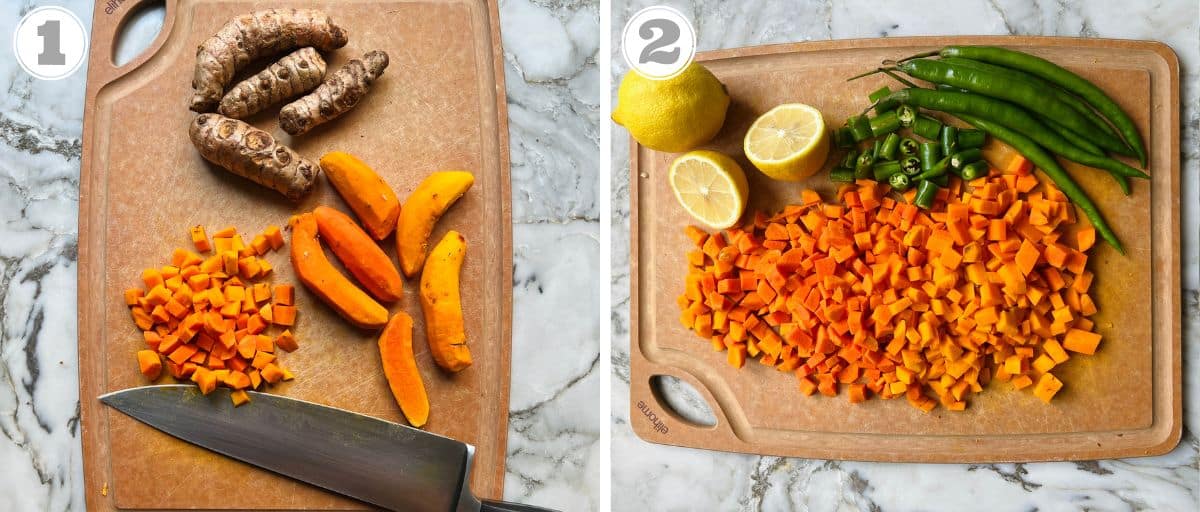
- In a medium frying pan, lightly roast mustard seeds and fenugreek seeds, just until they are hot to the touch. About 2 to 3 minutes.
- Allow them to cool and then lightly crush them in a grinder.
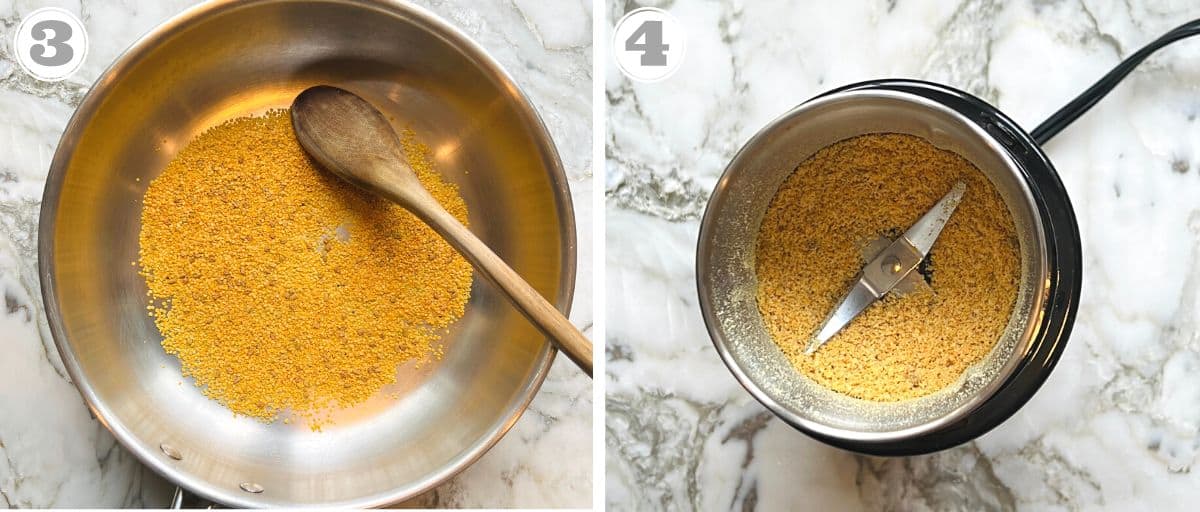
- Heat oil in a frying pan. Allow it to cool down until it's warm. Add crushed mustard seeds, fenugreek seeds, salt, and hing.
- Add chopped turmeric, green chilies, and lemon juice to the pan.
- Mix well. Allow it to cool down completely.
- Store it in an airtight glass container.
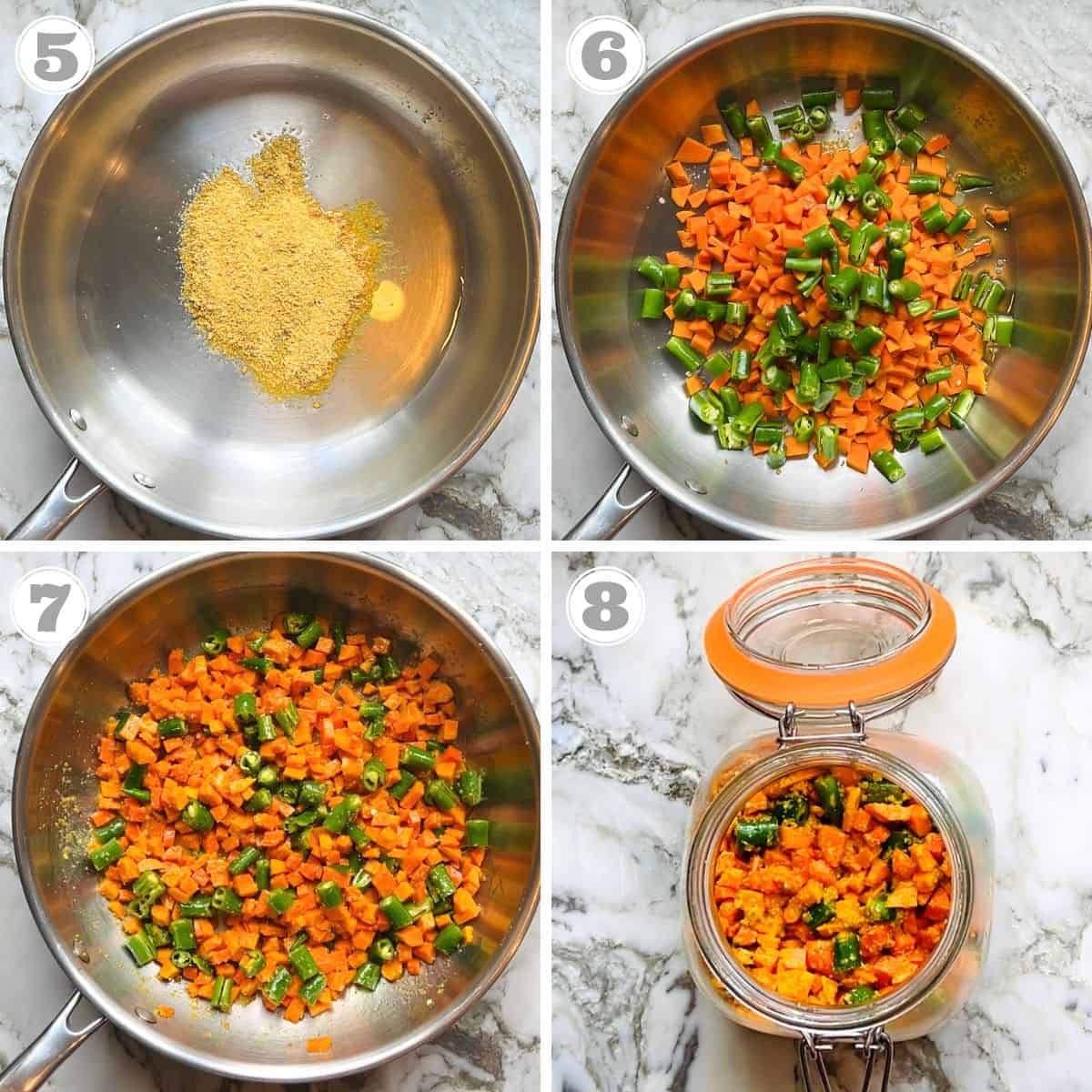
Serving
Fresh Turmeric Pickle makes for a perfect accompaniment to Indian food. We love to serve it with roti and curry, Dal and Rice, as well as Khichdi. I often add turmeric pickles to sandwiches, wraps, and homemade burgers.
Storing
Make sure to store the pickle in an airtight glass jar and the refrigerator. Make sure to use a clean and dry spoon to take out the pickle. The pickle will stay good for 2 to 3 weeks refrigerated.
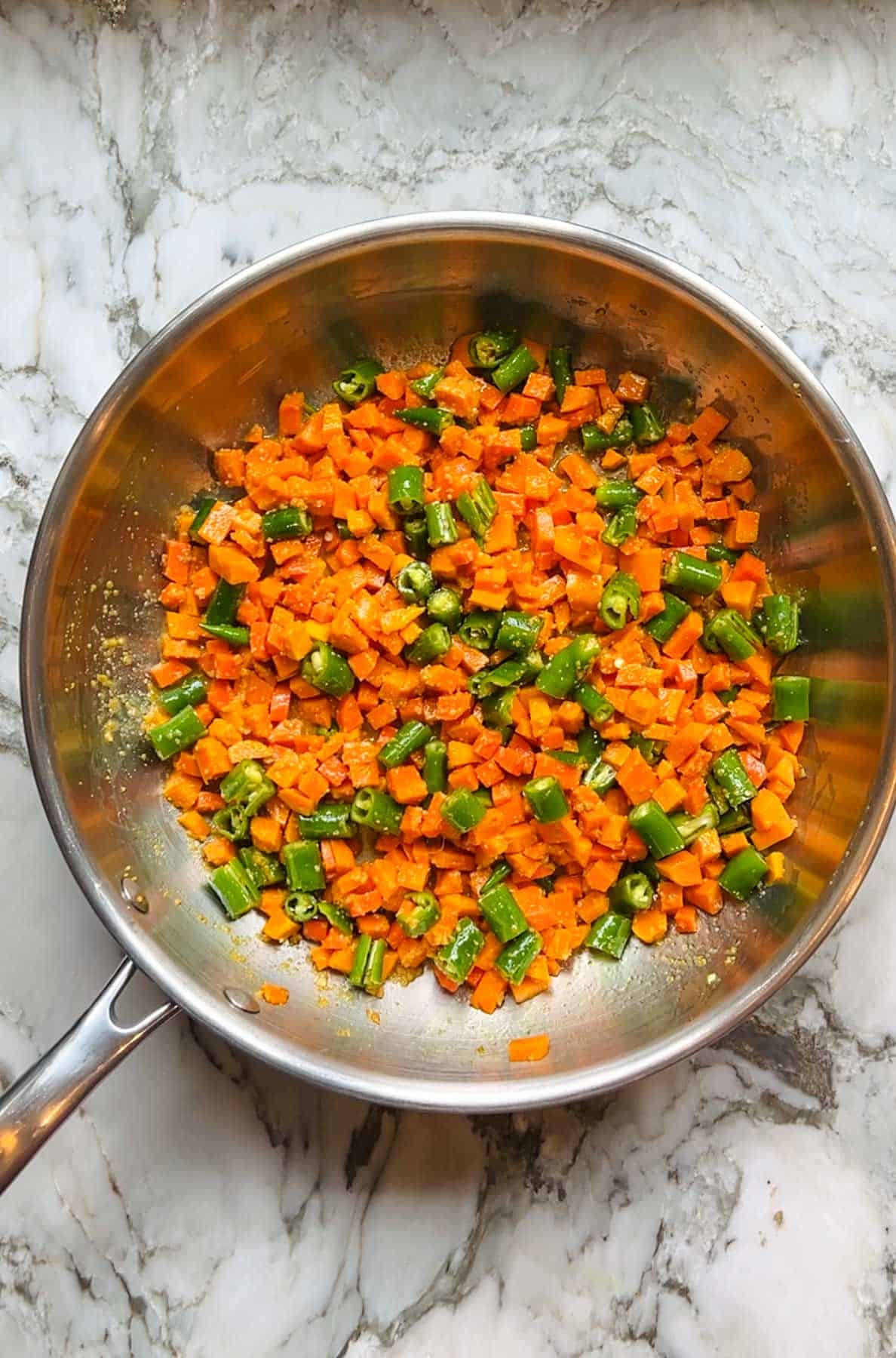
Variations
- I have used only fresh turmeric roots in this recipe. But you can also substitute half of the turmeric roots with fresh mango ginger (Curcuma Amada), also known as "Amba Haldi" or "Haldar". You will find it in Indian grocery stores right alongside fresh turmeric roots.
- Long Indian green chili can be substituted with fresh ginger, or you can also add serrano or jalapeno peppers.
- In this recipe, while my mom has cut the turmeric into small dice, sometimes she also cuts them into thin discs or grates them.
- Don't have split mustard seeds? Dry roast mustard seeds in a pan until they start to pop. Allow them to cool down and then pulse them a few times in a mixer grinder.
- Traditionally, in Northern India, Mustard oil is used to make pickles, while in Southern India, Sesame oil is used. I have used neutral avocado oil, but feel free to switch to either mustard or sesame oil in this recipe.
Recipe
Turmeric Green Chilli Pickle | Haldi Ka Achar
Recipe Video
Ingredients
- 10 oz fresh yellow turmeric roots
- 2 oz green chilies - 10 long chilies
- 2 lemons juiced ¼ cup
- 2 tablespoons oil (avocado, mustard, or sesame oil)
- 1 tablespoon kosher salt
- ½ teaspoon asafetida (hing)
- 2 tablespoons split mustard seeds (rai dal)
- 1 teaspoon fenugreek seeds
Instructions
- Rinse and completely dry turmeric roots and green chilies. Peel turmeric roots and then dice them into small cubes. Note: use disposable kitchen gloves to prevent the fingers from staining and use a darker cutting board.
- De-stem the green chilies. Make a vertical slit in each, then cut them into small half-inch pieces.
- In a medium frying pan, lightly roast mustard seeds and fenugreek seeds, just until they are hot to the touch. About 2 to 3 minutes. Allow them to cool and then lightly crush them in a grinder.
- Heat oil in a frying pan. Allow it to cool down until it's lukewarm or at room temperature. Add crushed mustard seeds, fenugreek seeds, salt, and hing
- Add chopped turmeric, green chilies, and lemon juice to the pan. Mix well. Allow it to cool down completely and then store it in an airtight glass container
Notes
- Wipe dry turmeric as well as green chilies to remove any moisture. This will give the pickle longer shelf life.
- Wear gloves when peeling and chopping the turmeric roots to prevent your hands from getting yellow stains. Also, use a darker color cutting board.
- Lightly roast fenugreek seeds making sure that they do not brown to prevent the bitter taste.
- Make sure to heat the oil and then cool it down to room temperature before adding it. Heating the oil will remove any bacteria from raw oil and also helps improve the shelf life of the pickle.
- Store the pickle in an airtight glass jar and in the refrigerator. Use a clean and dry spoon to take out the pickle. The pickle will stay good for 2 to 3 weeks refrigerated.
- Substitute half of the turmeric roots with fresh mango ginger
- Substitute Indian green chili with fresh ginger, serrano, or jalapeno peppers.
- Don't have split mustard seeds? Dry roast mustard seeds on a pan until they start to pop. Allow them to cool down and then pulse them a few times in a mixer grinder.


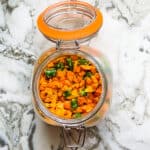


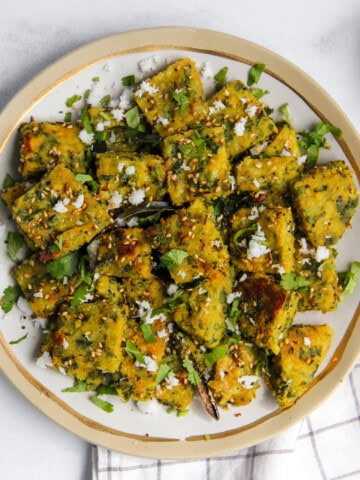
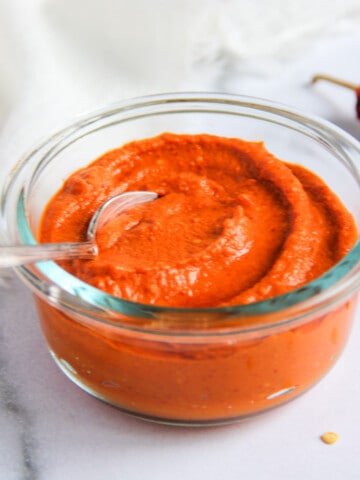
nabil gobraiel says
good to see authentic Indian food recopies
thanks for sharing
Savitha Singaravel says
I bought fresh turmeric by mistake. I thought I was buying Mango ginger to make pickle. I didn't know what to do with it. Thank you for the recipe